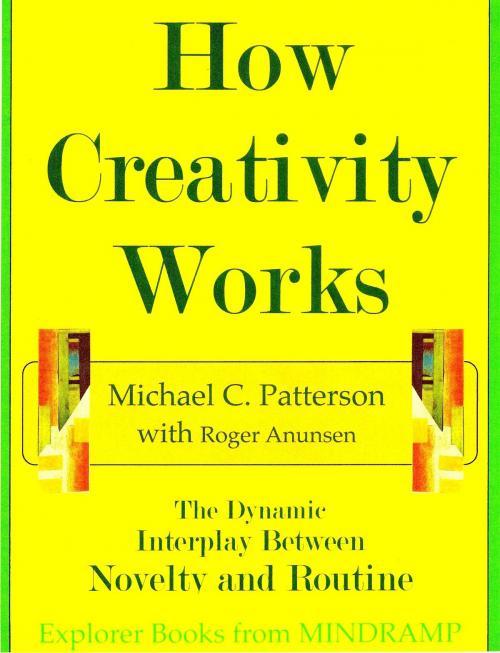How Creativity Works: The Dynamic Interplay of Novelty and Routine
Nonfiction, Health & Well Being, Self Help, Self Improvement, Creativity, Science & Nature, Science| Author: | Michael C. Patterson | ISBN: | 9781301927258 |
| Publisher: | Michael C. Patterson | Publication: | October 27, 2012 |
| Imprint: | Smashwords Edition | Language: | English |
| Author: | Michael C. Patterson |
| ISBN: | 9781301927258 |
| Publisher: | Michael C. Patterson |
| Publication: | October 27, 2012 |
| Imprint: | Smashwords Edition |
| Language: | English |
Creative expression is intimately tied to the human need for self-exploration and self-actualization. The creative impulse generates all that is good and glorious in human culture. It is the prime driver of economic growth and cultural development. The potential for future prosperity, happiness, justice and human fulfillment is dependent upon life affirming manifestations of human imagination. Our future depends on the creative and artistic aspects of the human mind.
Creativity is critical to us all. But, there’s a problem. Creativity is a mysterious entity. We don’t really understand how it works. What is creativity, anyway? Just what do we mean by creativity? Is it being artistic? Yes. But non-artists can be creative as well. Scientists are creative. Inventors are creative. Business people are creative. Cooks and carpenters are creative.
It is our firm belief that creativity is a thinking skill, like any other, that can be learned and improved. The goal of this book, and of the entire “Exploring Human Creativity” series of books, is to take a fresh look at creativity. We review much of the past and current research on creativity, but caution that much of the research misses the mark, defining creativity too narrowly. We argue that creative thinking requires the brain to generate new ideas and to reconcile them with stable habits and routines. Creativity is a dynamic interplay between stability and change. The better we understand how this dynamic works, the easier it will be to improve creative performance and productivity. Ultimately, our goal is to provide practical advice on how to improve creative thinking and productivity. Subsequent books in this series will focus on the various stages of the creative process and on creative talent, what it is and how to nurture it.
Creative expression is intimately tied to the human need for self-exploration and self-actualization. The creative impulse generates all that is good and glorious in human culture. It is the prime driver of economic growth and cultural development. The potential for future prosperity, happiness, justice and human fulfillment is dependent upon life affirming manifestations of human imagination. Our future depends on the creative and artistic aspects of the human mind.
Creativity is critical to us all. But, there’s a problem. Creativity is a mysterious entity. We don’t really understand how it works. What is creativity, anyway? Just what do we mean by creativity? Is it being artistic? Yes. But non-artists can be creative as well. Scientists are creative. Inventors are creative. Business people are creative. Cooks and carpenters are creative.
It is our firm belief that creativity is a thinking skill, like any other, that can be learned and improved. The goal of this book, and of the entire “Exploring Human Creativity” series of books, is to take a fresh look at creativity. We review much of the past and current research on creativity, but caution that much of the research misses the mark, defining creativity too narrowly. We argue that creative thinking requires the brain to generate new ideas and to reconcile them with stable habits and routines. Creativity is a dynamic interplay between stability and change. The better we understand how this dynamic works, the easier it will be to improve creative performance and productivity. Ultimately, our goal is to provide practical advice on how to improve creative thinking and productivity. Subsequent books in this series will focus on the various stages of the creative process and on creative talent, what it is and how to nurture it.















